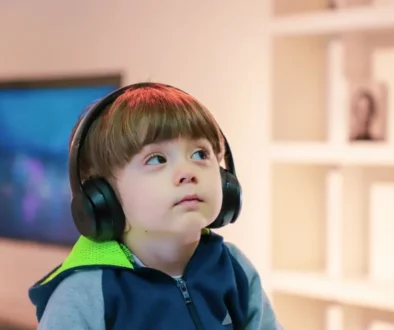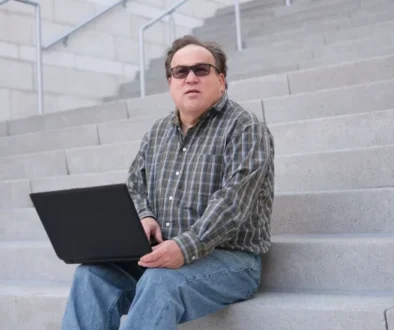Getting Your Toddler’s Autism Diagnosis In Texas
According to the Texas Autism Council, 1.54% of children receive an autism diagnosis in Texas every year. This is in comparison to the 1 in 54 children diagnosed yearly in the United States.
Once there is a suggestion that a child may have autism or another form of autism spectrum disorder, it is vital to seek help. You should seek a doctor’s opinion as soon as you can.
It is only through the help of a developmental pediatrician that an autism diagnosis can get made for beginning speech therapy or other treatments. Here, we will explain the process it can take your toddler to get an autism diagnosis in Texas.
Look for Common Signs of an Autism Spectrum Disorder
A lack of speech by a certain milestone is not enough to indicate that your child may have autism. Some of the most common signs that your child may have Autism or another form of Autism Spectrum Disorder, as listed by the CDC, are:
- Repetition of words or phrases over and over (known as echolalia)
- Stimming as flapping hands, rocking the body back and forth or spinning in circles
- Not keeping eye contact
- Having obsessive interests
- Getting upset by changes to an object’s order or routine
- Sensitivity to loud noises, bright lights, or overstimulation
If these signs, or other ones that may not appear normal for a toddler’s age, come up, then it is time to get to the bottom of what is causing them.
Have Your Child Undergo Evaluations
After talking to a developmental pediatrician, they will point you to doctors in different disciplines to rule out other conditions that may otherwise explain your child’s behavior. Here are some of the evaluations that your child may have to undergo to get a better sense of which ASD they may have.
Speech and Language
Sometimes, what may appear as a clear case of autism could just be another speech or language issue that has no connection to an ASD. Thus, speech and language evaluations are conducted by speech pathologists to ensure that a child does not have another speech or hearing problem. Once that is completed, the speech pathologist can make recommendations on where to go from there.
Genetic Testing
While genetic testing cannot diagnose or detect autism, it can give a parent insight if there is a chance their child has a genetic disorder exhibiting similar symptoms. Genetic disorders that can disguise themselves as ASD include:
- Fragile X syndrome
- Prader-Willi syndrome
- Angelman syndrome
- Chromosome 15 duplication syndrome
Screening for these disorders can determine if an underlying condition can explain the child’s developmental delays.
M-CHAT Screening
The Modified Checklist for Autism in Toddlers (M-CHAT) is a screening tool that assesses the risk of ASD in children between 16 and 30 months old.
What is important to realize is it is only a first step in the official diagnostic process. If your child receives a high-risk score, it may not be a confirmation they have Autism. This is why further evaluation through the Autism Diagnostic Observation Schedule is needed.
Autism Diagnostic Observation Schedule (ADOS)
The Autism Diagnostic Observation Schedule is the evaluation that is completed after the M-CHAT screening. This is after M-CHAT notes there is a risk of ASD in your child. It is a more formal screening evaluation than the M-CHAT for this reason and will give an official diagnosis of an Autism Spectrum Disorder.
After the evaluation is conducted, a summary of results done during that hour is sent to your child’s pediatrician or neurologist. From there, the pediatrician or neurologist can confirm if your child fits the criteria for a diagnosis.
All of the above evaluations are necessary to ensure that your child is receiving the proper diagnosis that is causing their behavior. If other conditions have been ruled out and it is confirmed your child has autism, you can get started on therapy sessions and finding professional support.
Begin Taking Your Child to Therapy
Once diagnosed, you should start taking your child to Applied Behavioral Analysis (ABA) therapy, speech and language therapy, occupational therapy, and physical therapy. Which exact therapies your child may need will be referred to by your pediatrician at the time your child is diagnosed with ASD.
While it sounds overwhelming for your child to go through, know that the earlier your child starts going, the sooner you will see clear benefits. With childhood autism in toddlers, early intervention is ideal rather than later.
Apply for Early Childhood Intervention Services
If your toddler is under three years old, you can visit https://citysearch.hhsc.state.tx.us/ to get information on Early Childhood Intervention Services that are available in your area. However, if your child is over age three and in school, you should apply for services through the local school district.
If your school district or Intervention Services cannot grant local support, then you should seek information on grant-funded options in Texas. They can help offset costs related to special educational needs.
Get an Autism Diagnosis in Texas as Soon as You Can
Seeking an autism diagnosis in Texas can appear like a lot of steps the parent has to take. Yet, it is necessary so your toddler can get the correct treatments needed for their diagnosis. If there are signs your child has a form of Autism Spectrum Disorder, consult your pediatrician to learn about any next steps.
We offer in-person and telemedicine appointments that can fit your schedule and allow you to meet with one of our specialists. To schedule an appointment for both in-person and telehealth testing, contact us today.



